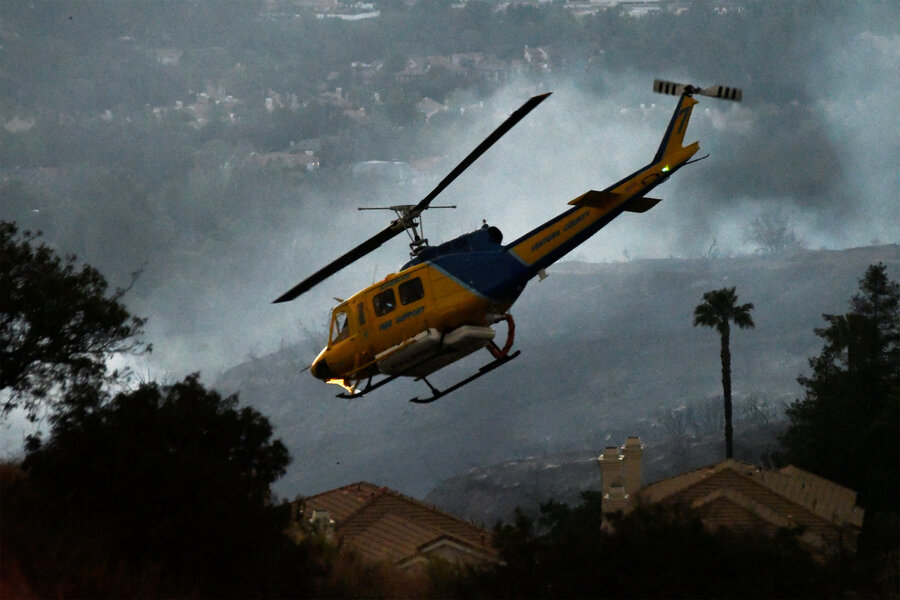Fire crews fight to contain Calabasas' 'Old Fire'
A wildfire has quickly moved through the hills of Calabasas, a city in Los Angeles county, over the weekend, calling over 400 firefighters to battle the blaze.
The Los Angeles County Fire Department says the fire started Saturday afternoon after a single car crashed into a power pole. Dubbed the “Old fire” by firefighters because of its proximity to Old Topanga Canyon Road, the blaze has caused minor damage to two homes, destroyed one commercial building and led thousands of residents to evacuate their homes.
The Los Angeles County Fire Department tweeted Sunday morning that Old fire had burned over 515 acres but was at 30 percent containment by 7 am. Some of the 5,000 homeowners forced to evacuate were allowed to return home Sunday morning, but the fire department warned they would likely be without power.
“The fire is starting to move on us, we’re deploying all. We just did a major shift change so you see the fire engines going by us, they’ve been briefed, they’re going out on the line, and they’re going to start their tactical operations to try and improve the amount of containment – that’s what we’re doing right now,” Los Angeles County Fire Department Deputy Chief John Tripp said in a press conference Sunday morning.
Fire crews were dumping water from Lake Calabasas on the flames from helicopters and airplanes, but Deputy Tripp said the area’s rugged terrain required ample manpower above all else.
“We can drop all the water all day,” Tripp tells NBC News. “It’s got to be boots on the ground to make sure that fire’s out.”
California, and Los Angeles specifically, is no stranger to wildfires. Almost 900,000 acres were burned in California in 2015, ranking third behind Alaska and Washington, according to the Insurance Information Institute.
According to the National Weather Service, temperatures will rise into the 90s in the San Fernando and San Gabriel valleys and up to 106 in the Antelope Valley.
“Since Thursday, a ridge of high pressure has warmed Southern California, prompting weather officials to warn of an enhanced heat risk on Saturday,” says the Los Angeles Times. “The Southland heat wave has not produced any records, but Weather Service meteorologist Joe Sirard called the temperatures ‘significantly above normal,’ 10 to 20 degrees higher than average in many areas.”
Higher temperatures can spur wildfires by making the landscape drier and thus more flammable. Wildfires are often considered one of climate change’s many negative effects as millions of more acres in the US are burned each year. In fact, nine of the 10 years with the largest acreage burned since 2000 has occurred since the turn of the century, coinciding with many of the hottest years on record.
“Over the next 25 years, the U.S. National Climate Assessment predicts the area burned by wildfires will double nationwide as global warming leads to higher temperatures, longer wildfire seasons and more frequent droughts,” explains the communication group Climate Nexus. “By the end of the century, models predict that burned area in North America could increase by 2 to 5.5 times.”







